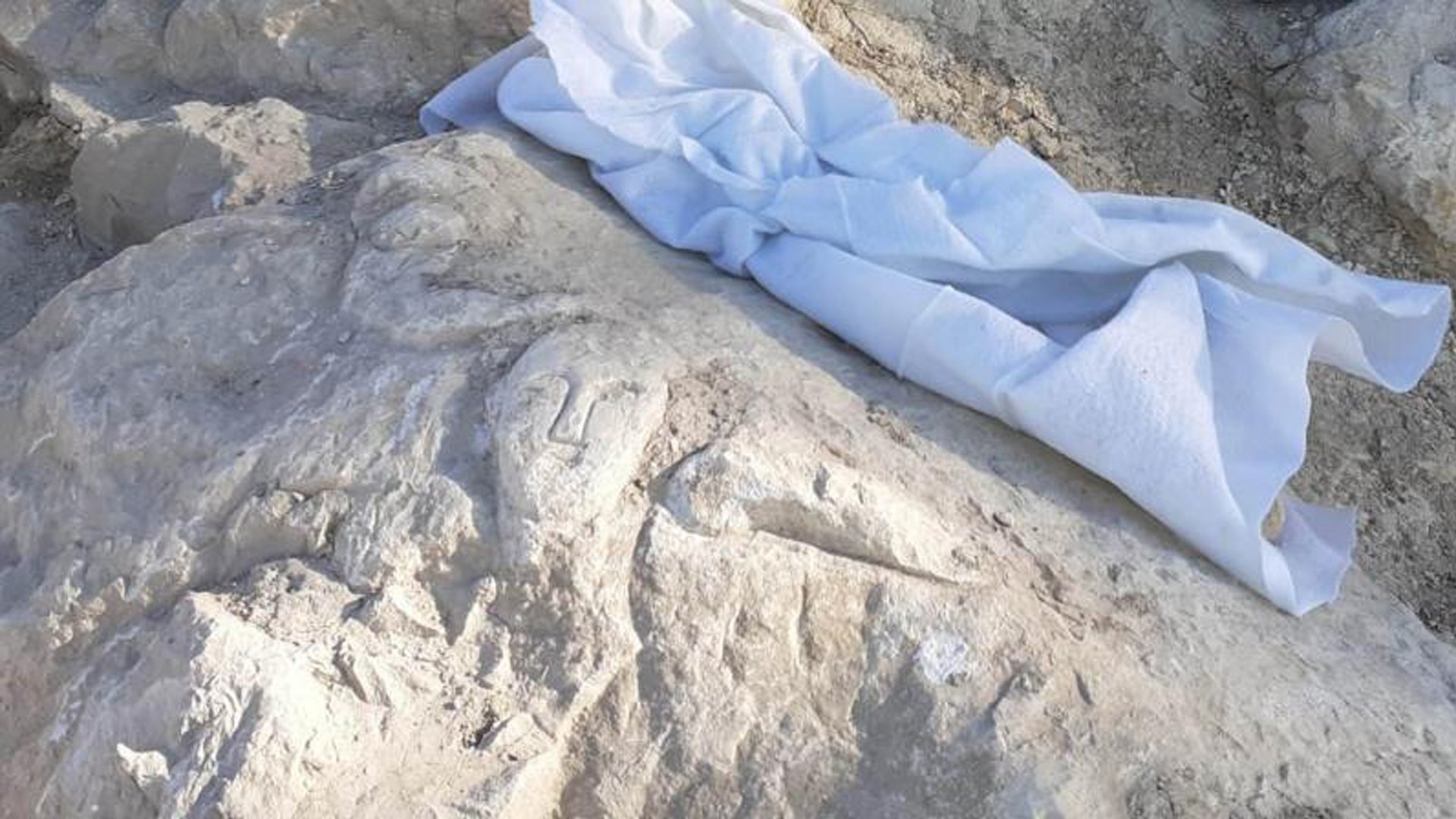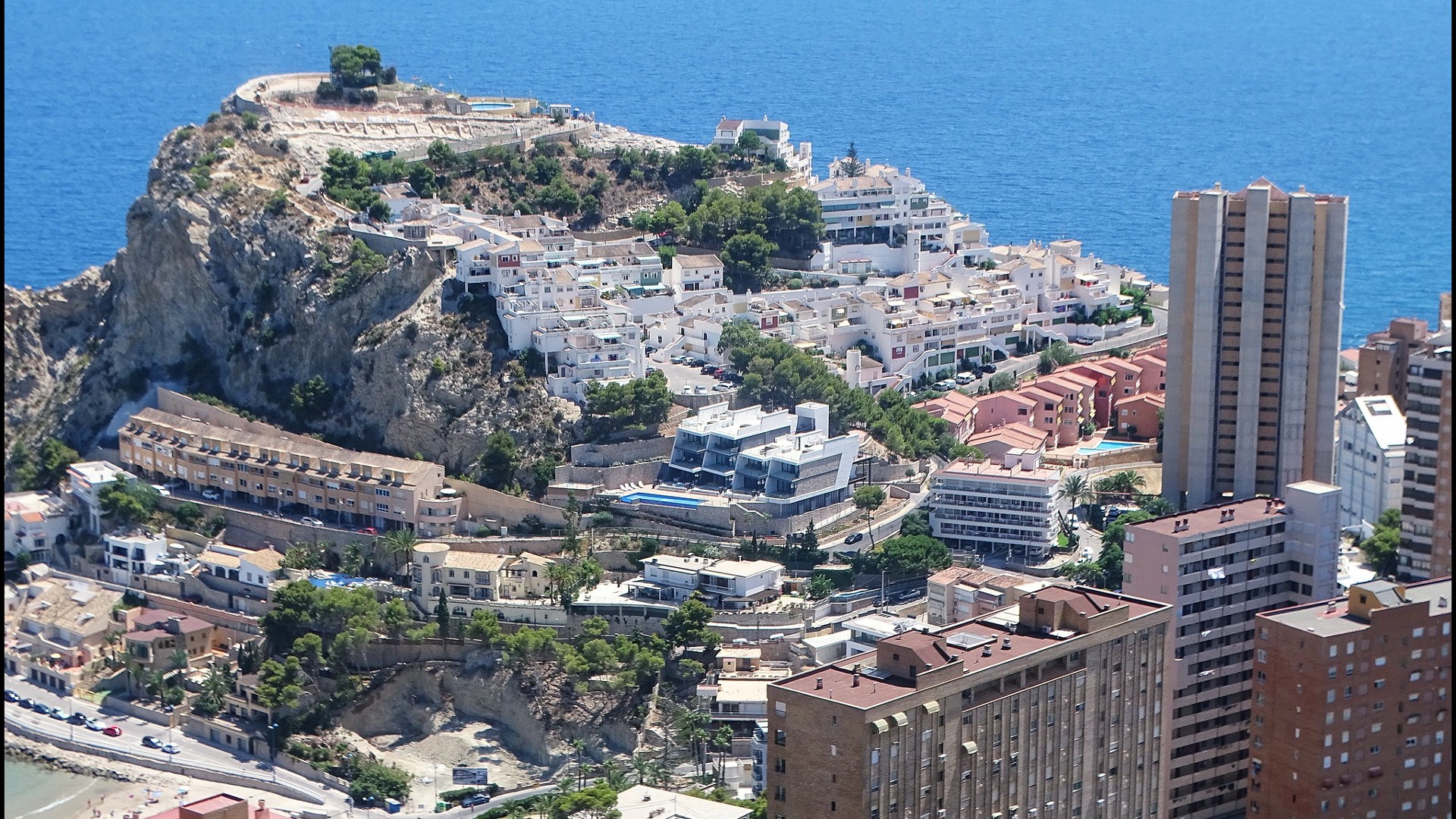Heavy rains expose ancient phallus and 'imposing' face carvings at Roman fort in Spain
A rainstorm has exposed the ancient Roman stone carvings of a phallus, face and cornucopia at a first-century fort in Spain.

Heavy rains in Spain have revealed the stone carvings of a phallus, human face and cornucopia at an ancient Roman fort.
The carvings were crafted at Tossal de La Cala, a fort dating to the first century B.C. in modern-day Benidorm, on the Mediterranean coast. Although the ancient art was first spotted in January 2020, city officials and archaeologists made the announcement on May 19, 2023 to "ensure the protection of the relief," according to a translated statement from the city of Benidorm.
The face, phallus and horn of plenty were carved into an area measuring about 22 by 16.5 inches (57 by 42 centimeters). But the original carving may have been larger, considering that a portion of the rock is missing, Jesús Moratalla, a director of the excavation and an associate professor of archaeology at the University of Alicante, said in the statement.
The trio of carvings are unique "since there are no [known] references to similar engravings and reliefs" in formerly Roman-occupied territories, Ana Pellicer, the councilor for historical and cultural heritage in Benidorm, said in the statement.
Katherine Halcrow, who has a doctorate in classical archaeology from the University of Oxford and was not involved in the excavations, remarked on the carving's symbolic meanings. Both the horn of plenty and the phallus were "traditionally seen as harbingers or talismans of good luck, protection, and plenty," Halcrow told Live Science in an email. "The phallus in particular would have had an apotropaic function, meaning its function would have been to ward off evil from the site and the people associated with it."
The protective qualities of phalli are attested by ancient Roman writers Marcus Terentius Varro (lived 116 B.C. to 27 B.C.) and Pliny the Elder (A.D. 23 to 79).
Related: Smooth wooden phallus found at a Roman fort was likely a sex toy
Sign up for the Live Science daily newsletter now
Get the world’s most fascinating discoveries delivered straight to your inbox.

In the newfound carving, the face's two eyes are looking forward toward the viewer, which was likely an intentional perspective given by the crafter, who "used a frontal rather than side profile pose to underscore a sense of dominance and directness," Halcrow said. "It was meant to be protective and imposing."
Ancient phallic carvings dating to Roman times in Europe are common, but "this carving has no other known regional, comparable precursors," Halcrow said. "The iconography and symbolism are not rare for Roman artworks, but other elements are, including the medium and the setting." Since the relief is possibly incomplete, other symbols or contextualizing elements may be lost.
Excavations began at the Tossal de La Cala in the 1940s. The University of Alicante has overseen operations at the ancient fort since 2013.
This type of small fort, known as a castellum, would have served as a watchtower overlooking the waters near Alicante, Spain, for naval attacks. It was built in 77 B.C. under the command of Quintus Sertorius, a Roman-turned-rebel and leader of the Sertorian Wars waged against the Roman Republic between 80 B.C. and 72 B.C. on the Iberian Peninsula.
Now that their discovery has been made public, the archaeologists hope "to seek solutions that allow it to be exhibited with the maximum guarantees without separating it from Tossal," according to the translated statement. The relief is expected to be viewable to the public in the coming months.

Hannah Kate Simon is an archaeologist and art historian with a focus on Roman art and archaeology. Hannah holds a Master's degree in the history of art and archaeology from New York University's Institute of Fine Arts, as well as two bachelor degrees in Art History and Theatre from Indiana University of Pennsylvania. She previously worked at NYU's Grey Art Gallery as a contributor to its exhibition catalogues, interned at the Metropolitan Museum of Art in New York City, and excavated at Aphrodisias, an ancient Greek City in what is now Turkey.









